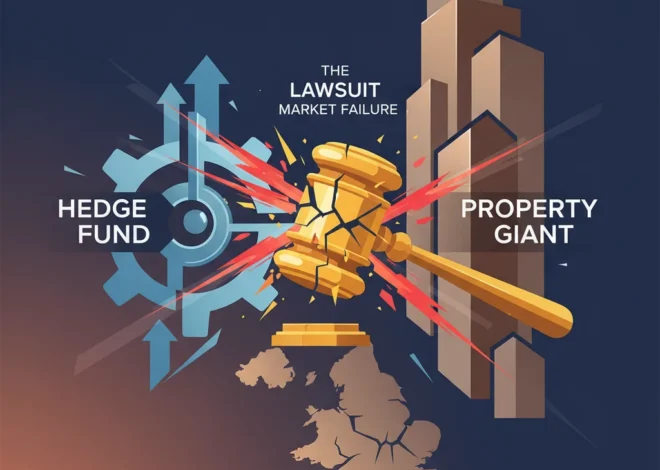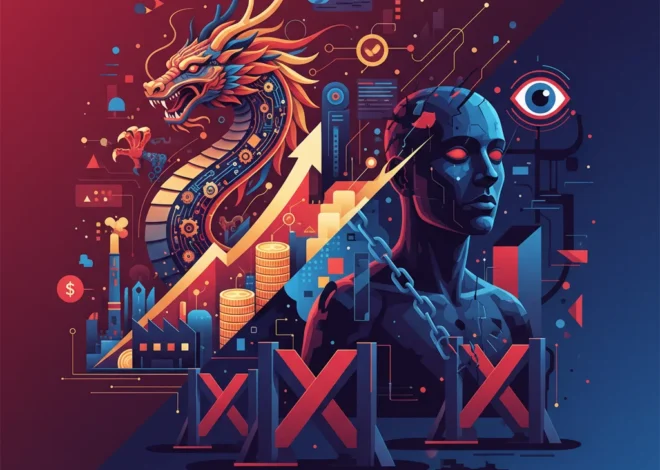
The Investor’s Polymath: Decoding the Puzzles of Modern Finance
For enthusiasts of intellectual challenges, the Financial Times’ “Polymath” crossword is a revered weekly ritual. It’s a complex grid of cryptic clues and intersecting answers, demanding not just knowledge, but the ability to see connections, patterns, and the bigger picture. In many ways, successfully navigating the modern financial landscape is a remarkably similar exercise. The global economy is our grid, and the intersecting forces of monetary policy, technological disruption, and geopolitical shifts are our clues—some straightforward, others maddeningly cryptic.
Just as a crossword solver can’t focus on a single clue in isolation, today’s investors, finance professionals, and business leaders cannot afford a narrow view. The answer to “17 Down” might depend entirely on your solution for “22 Across.” Similarly, the future of the banking sector is inextricably linked to the trajectory of financial technology, and the performance of the stock market is tied to the macroeconomic environment. This guide will use the elegant framework of a crossword puzzle to help you decode the complexities of modern finance, from the sweeping “across” clues of the global economy to the specific “down” clues of industry-specific innovation.
The “Across” Clues: Charting the Macroeconomic Landscape
In a crossword, the “across” clues often form the foundational words that anchor the entire puzzle. In finance, these are the broad, sweeping macroeconomic trends that define the environment for every asset class and business strategy. Getting these right provides the context for everything else.
1. Monetary Policy & The Inflation Enigma
Perhaps the most significant “across” clue of the past few years has been the global inflationary environment and the corresponding central bank response. After a decade of low interest rates, institutions like the Federal Reserve and the European Central Bank have engaged in aggressive tightening cycles to tame rising prices. This has profound implications, influencing everything from corporate borrowing costs to stock market valuations. As of early 2024, while inflation has shown signs of cooling, the path forward remains a puzzle. The International Monetary Fund (IMF) noted that the global economy is heading for a “soft landing,” but that the fight is not yet over, with core inflation persisting in many economies. Understanding the language of central bankers—dovish vs. hawkish stances, dot plots, and quantitative easing—is essential to solving this clue.
2. Geopolitical Intersections
Globalisation has made the world’s financial grid more interconnected than ever. A conflict in Eastern Europe can spike energy prices globally, while trade tensions between major economic powers can completely reconfigure supply chains. These geopolitical shifts are long, powerful “across” clues that impact international trade, currency exchange rates, and investor risk appetite. Astute investors must now also be students of geopolitics, understanding how events in one corner of the world can ripple across their entire portfolio. This adds a layer of complexity and uncertainty to traditional economics and investment models.
The China Conundrum: Why US Businesses Can't Quit the World's Largest Market
3. The Technological Disruption Wave
The third major horizontal force is the relentless march of technology. The rise of Artificial Intelligence, the expansion of cloud computing, and the ongoing digital transformation of industries are not isolated events. They are a fundamental reshaping of the economic grid. This technological wave is impacting productivity, creating new markets, and rendering old business models obsolete. For investors, this means identifying the long-term winners of this transition while being wary of the incumbents who may fail to adapt. This is less a single clue and more a fundamental rule change for the entire puzzle.
The “Down” Clues: Deep Dives into Sectoral Shifts
With the macroeconomic context set, we can turn to the “down” clues—the vertical, industry-specific trends where specialized knowledge pays dividends. These are the areas where disruptive innovation is creating immense opportunities and challenges.
1. The Fintech Revolution
Nowhere is the intersection of technology and finance more apparent than in the rise of fintech. This sector is not just an industry; it’s a fundamental rewiring of the entire banking and financial services apparatus. From digital payments and robo-advisors to “Buy Now, Pay Later” services and AI-driven underwriting, financial technology is changing how we save, spend, borrow, and invest. The global fintech market is a testament to this, with its value projected to reach nearly $700 billion by 2030, according to a report from Grand View Research. For traditional banks, this is an existential challenge. For consumers and businesses, it promises greater efficiency, access, and personalization. For investors, it’s a hotbed of high-growth opportunities.
2. Blockchain and the Digital Asset Class
If fintech is rewriting the rules of finance, blockchain is proposing an entirely new rulebook. While often associated with cryptocurrencies like Bitcoin, the underlying distributed ledger technology has far-reaching implications for everything from supply chain management to digital identity and the tokenization of real-world assets. This is a highly cryptic clue, with a lexicon of its own (DeFi, NFTs, smart contracts). While the sector is known for its volatility, institutional adoption continues to grow. A 2023 survey by Deloitte found that a significant majority of financial services executives see blockchain and digital assets as a top priority for their organizations in the coming years. This indicates a clear shift from speculative curiosity to strategic implementation.
The Investor's Cadence: What Art and Music Can Teach Us About Market Signals
Below is a comparison of two primary approaches to “solving” for value in the stock market, akin to using different techniques to decipher a crossword clue.
| Feature | Growth Investing | Value Investing |
|---|---|---|
| Primary Goal | Capital appreciation | Finding undervalued assets |
| Company Profile | High revenue/earnings growth, often in tech or emerging industries | Stable, mature companies, often trading below intrinsic value |
| Key Metrics | Price-to-Sales (P/S), forward P/E, revenue growth rate | Price-to-Book (P/B), Price-to-Earnings (P/E), dividend yield |
| Risk Profile | Higher volatility, sensitive to interest rate changes | Lower volatility, risk of “value traps” (cheap for a reason) |
| Analogy | Solving for a flashy, new-age word | Finding a classic, reliable word that fits perfectly |
Assembling Your Toolkit: Strategies for Solving the Puzzle
Knowing the clues is one thing; having the right strategy to solve them is another. A skilled crossword solver has a process—they might start with the easiest clues to build a framework, use a pencil, and never be afraid to erase. Similarly, a successful investor needs a disciplined toolkit.
1. Fundamental vs. Technical Analysis
These are two primary schools of thought in market analysis. Fundamental analysis is like carefully reading and understanding the definition of a clue—it involves deep dives into a company’s financial health, management, and competitive position to determine its intrinsic value. Technical analysis is more like pattern recognition in the grid itself—it focuses on chart patterns, trading volumes, and market momentum to predict future price movements. Many successful investors use a hybrid approach, using fundamentals to decide *what* to buy and technicals to decide *when* to buy.
2. The Power of Diversification
The cardinal rule of solving any complex system is to not bet everything on one piece. In investing, this is diversification. By spreading investments across different asset classes (stocks, bonds, real estate), geographies, and industries, you ensure that poor performance in one area doesn’t sink your entire portfolio. It’s the financial equivalent of not getting stuck in one corner of the crossword grid. You work on different sections simultaneously, allowing progress in one area to unlock insights in another.
3. Continuous Learning and Adaptation
The FT Polymath puzzle changes every week. So does the market. The strategies that worked in a zero-interest-rate environment may not work during a tightening cycle. The dominant technology of today could be obsolete tomorrow. The most critical tool, therefore, is a commitment to continuous learning—reading widely, staying informed on global events, and being willing to question your own assumptions. The puzzle is never truly finished; it simply resets with a new set of clues.
Conclusion: The Ever-Evolving Grid
Viewing the world of finance through the lens of a crossword puzzle helps bring its intricate, interconnected nature into focus. The broad “across” clues of the macro-economy provide the structure, while the specific “down” clues of sectoral innovation offer opportunities for those willing to do the research. Success is not about finding a single magic answer, but about developing a disciplined process for analyzing the information, understanding how the pieces fit together, and adapting as the grid evolves.
Whether you are a CEO navigating corporate strategy, a professional managing a client’s portfolio, or an individual planning for your future, the principles are the same. Pay attention to the big picture, dig deep into the details, and never stop learning. The financial puzzle is one of the most challenging, but for those who master its language, it is also one of the most rewarding.


